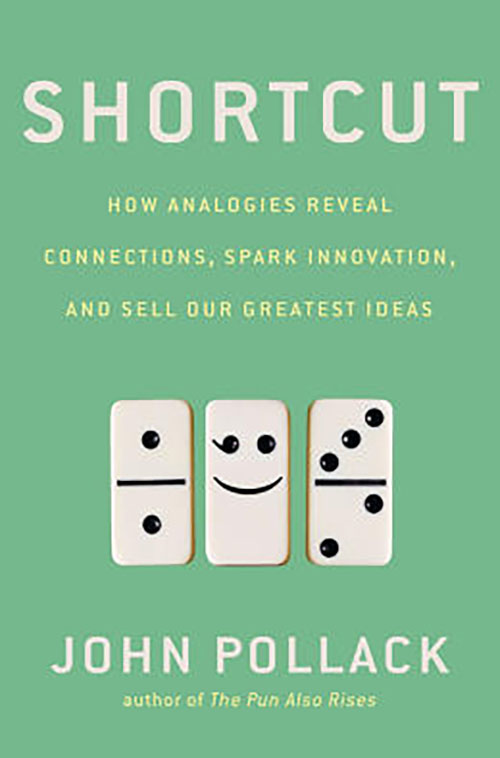Here’s a new book from John Pollack — a former Bill Clinton speechwriter — called Shortcut, with the sub-title being “How Analogies Reveal Connections, Spark Innovation, and Sell Our Greatest Ideas.”
Like anything in the business world circa 2014, once Fast Company wrote an article about the book and Pollack, they had to channel everything through something connected to Steve Jobs. (History’s greatest businessman!)
In fairness, though, this is fairly interesting stuff. Let’s start with a story.
Bill Klann was a machinist with the Ford Motor Company in the 1907-1913 period. He had been employed at various jobs beforehand — including working with streetcars and blacksmithing. He went to a Chicago slaughterhouse in this range of time and saw how effectively the cows were dismembered and move out as product. Fundamentally, he thought that destroying something was the same as building something (which is somewhat deep, and also somewhat true), and he pitched his bosses at Ford on the idea of a machine-type system to move auto parts around better in terms of assembly. (See where this is going?) They resisted. Moving cow flesh and moving auto parts are fundamentally different, right?!?! Eventually, Klann was able to convince his bosses at Ford about the similarities using an analogy, and the moving assembly line — > Model T — > Ford was Jobs before Jobs was Jobs.
Here’s a fundamental point of note: acronyms are terrible. They actually create walls and further silos, because if you go to a meeting, you might not have any idea what “LWWs” are (I made that up), and that kind of fences you off from the conversation.
On the flip side, analogies are good things: they help us see connections between things we wouldn’t normally have connected. That actually opens doors / breaks down fences (in the conventional sense, at least), and that’s a positive thing for business function.
Think about it like this: let’s say you have a great idea at your job, but it’s very different from how your job would normally be functioning in that space. For example, let’s say you think you know how to foster more employee engagement at your company, and keep good knowledge in-house, but your company is very bottom-line driven and they don’t give two craps about anything that won’t impact said bottom line. You could show them what a company like Lowe’s has done — or prepare other analogous ideas around how revenue ties to retention and engagement — and that suddenly allows people to think more broadly about the new idea, because it’s speaking to previously-understood connections in their brain.
If, on the other hand, you go in there and say “We need EE (employee engagement) because ROI and BLE aren’t good for Q4,” all you’re doing is enforcing previously-held bullshit — those ideas probably won’t go that far.
As Pollack explains:
“The most creative problem solvers are those who draw from more diverse streams of information,” says Pollack. “If you have more different types of Lego to connect, you’re going to have a lot more options when creating or inventing.”
Think about attention spans and getting people to pay attention to you. It’s hard, especially in an office environment. What if you went to them and immediately had their attention by presenting a new concept through the prism of an old concept — which is essentially what an analogy does? You’d probably get more things moving through the pipes, right?
